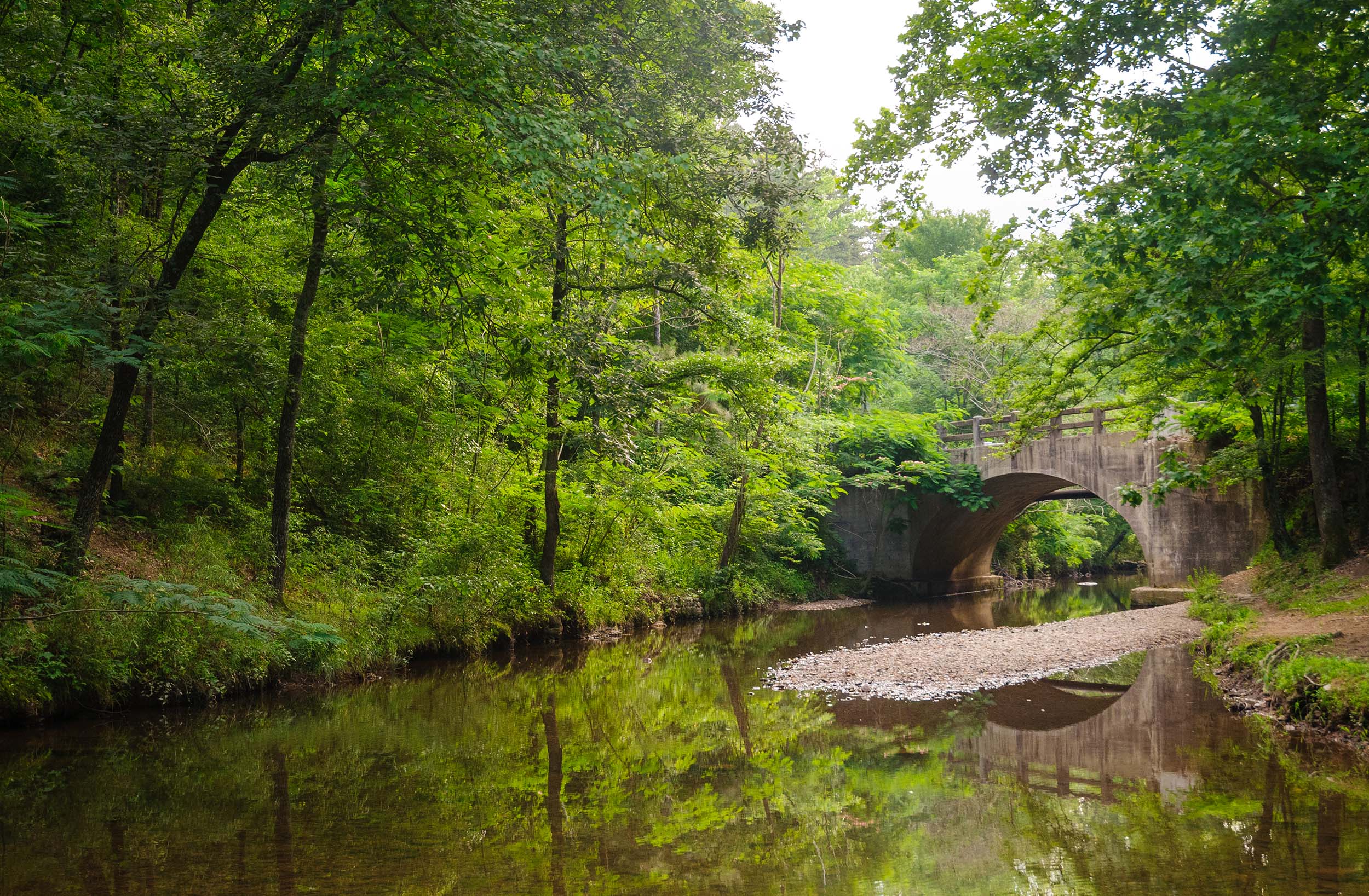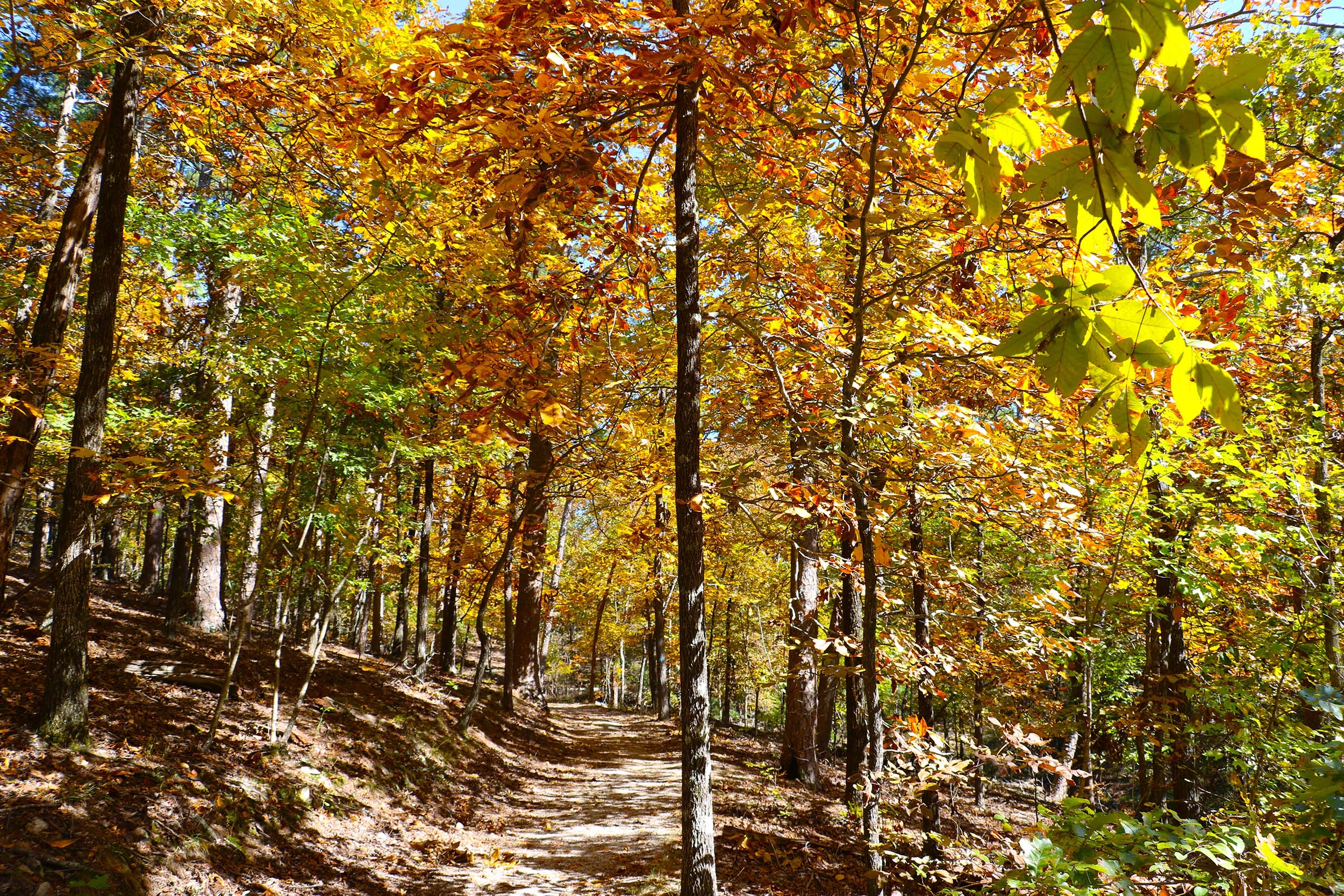Park Information Quick Facts
Location: Arkansas
Park Size: 5,550 Acres
Time Needed: 1-2 days
Best Season: September – October
Must Do: Mountain Tower
Pro Tips: The bathhouses offer a unique opportunity to experience the hot springs, but they can get busy later in the day.
Visitor Centers
Hot Springs National Park features two primary visitor centers that offer essential information and resources to enhance your visit. The Fordyce Bathhouse Visitor Center, located in the heart of Bathhouse Row, is the main visitor center and serves as the park’s headquarters. Housed in a beautifully restored historic bathhouse, the Fordyce Center offers exhibits that detail the history of the thermal baths, the park’s cultural significance, and its geology. Visitors can tour the former bathhouse, which showcases vintage equipment and original architectural details, and learn about the area’s fascinating past. The center also provides park maps, brochures, and staff who can assist with planning your visit.
Plan Your Hot Springs Adventure Today!
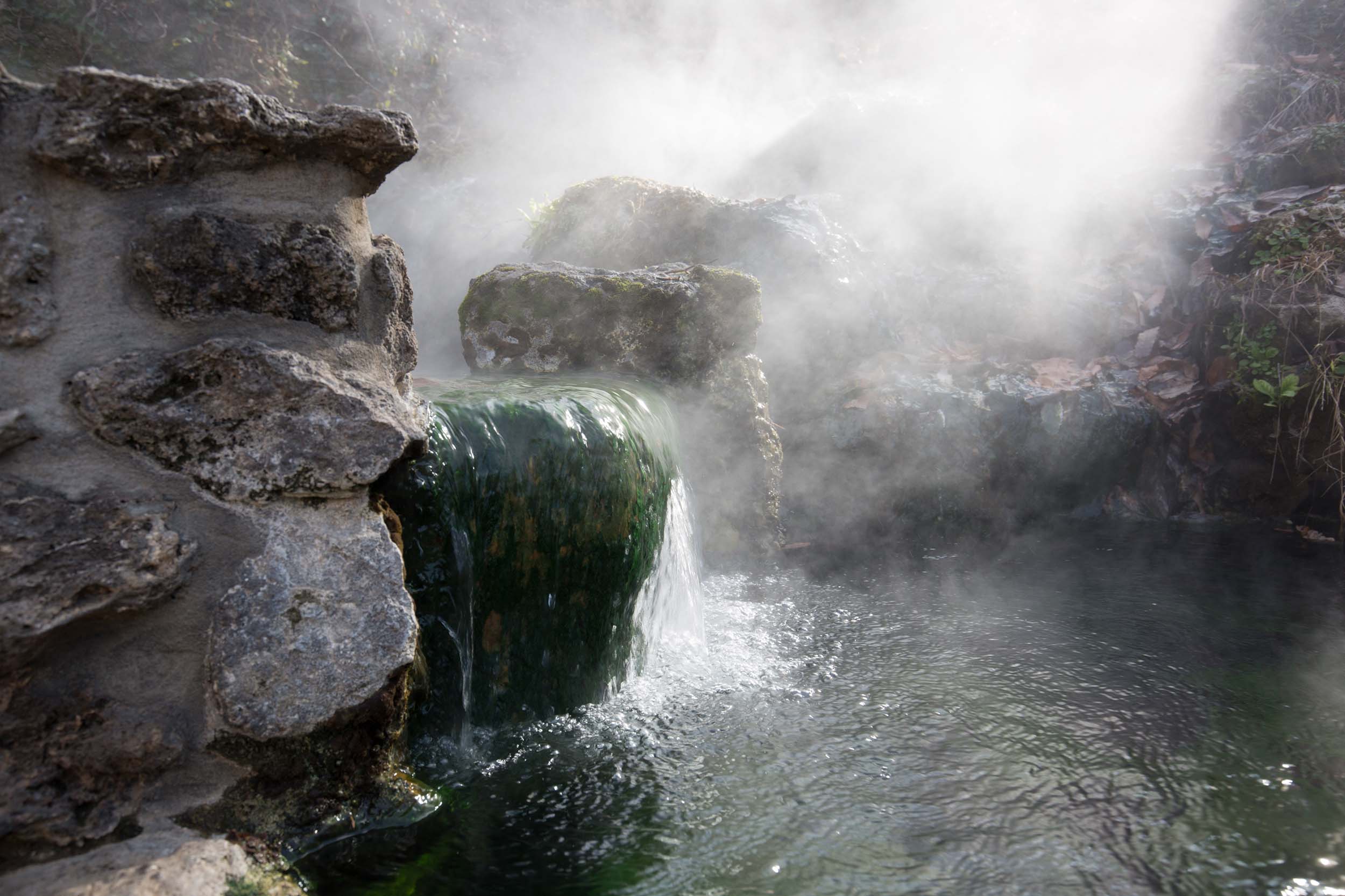
Getting There
How to Travel to Hot Springs National Park
Traveling to Hot Springs National Park is relatively easy due to its central location in Arkansas, making it accessible by both car and public transportation. If you’re flying into the area, the nearest airport is Bill and Hillary Clinton National Airport (LIT) in Little Rock, about 55 miles north of the park. From there, you can rent a car and drive to Hot Springs, which takes roughly an hour and provides a scenic route through the Arkansas countryside. Additionally, regional airports like Memorial Field in Hot Springs offer limited flight options, primarily for small private planes, so driving is often the most convenient method.
For those coming by car, Hot Springs is well-connected via major highways, including U.S. Route 70 and U.S. Route 270. If you’re coming from the north, Interstate 30 leads to Hot Springs, with direct access to the town and the park. From the south, you can take U.S. Route 71, which leads into the park area. Once in town, signage will direct you to the various park entrances, Bathhouse Row, and visitor centers, ensuring a smooth arrival. There is ample parking at the park’s main attractions, including along Bathhouse Row and at the trailheads for hiking.
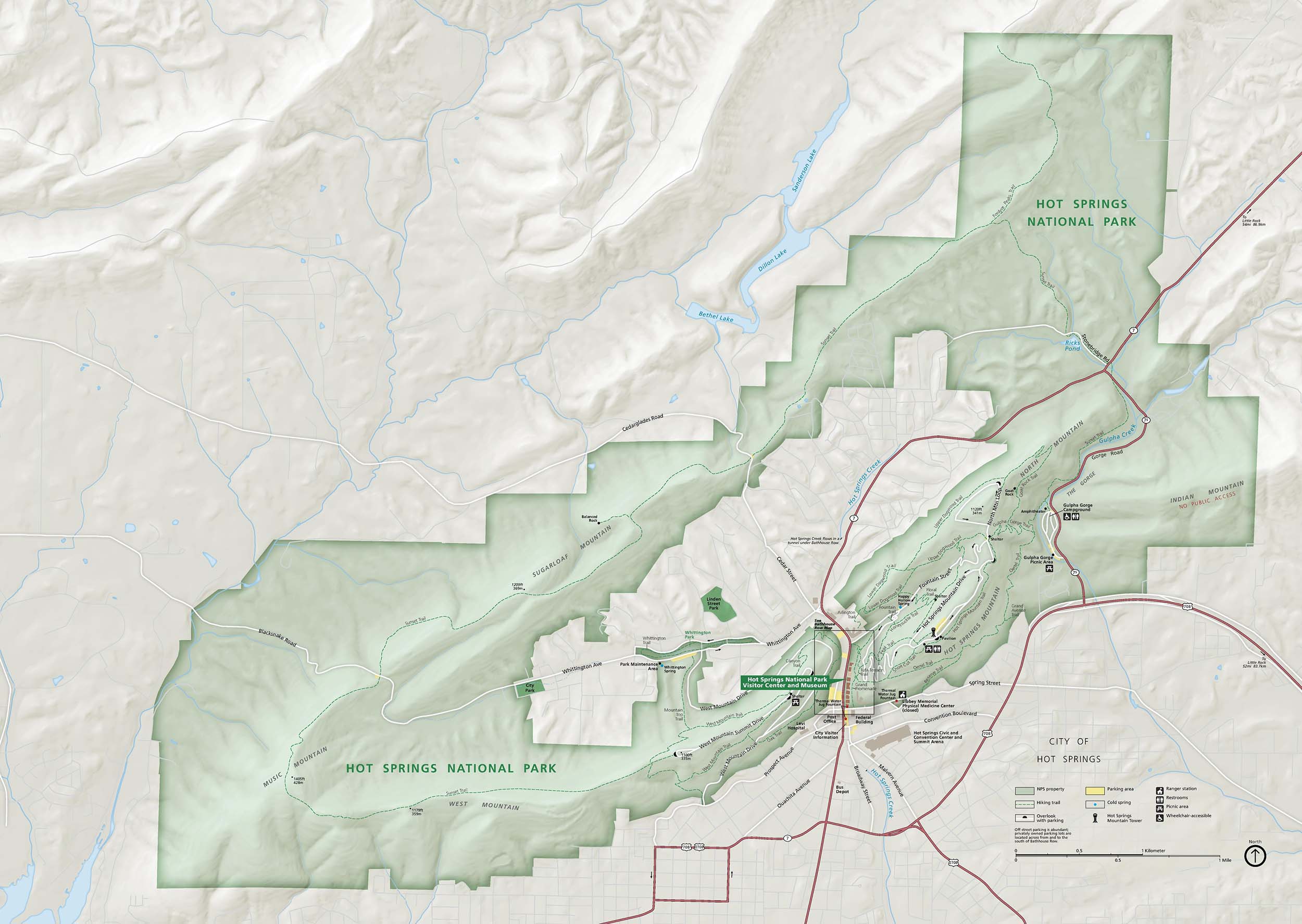
Camping
Tent Campsites
- Gulpha Gorge Campground features several tent-only campsites that offer a peaceful, natural setting along Gulpha Creek.
- These sites provide picnic tables, fire rings, and access to shared restrooms with running water and flush toilets.
- The tent sites are ideal for those who prefer a more rustic, nature-based camping experience.
RV Campsites
- The campground has a selection of RV-friendly sites that offer water and electrical hookups (30 amp), with a few offering sewer connections.
- The sites are spacious, with room for large RVs, and come with picnic tables, fire rings, and access to restrooms and showers.
- RV campers also enjoy proximity to hiking trails, making it a great base for exploring the park’s natural beauty.
Accessible Campsites
- Some campsites in Gulpha Gorge are accessible to individuals with disabilities, providing flat, easy-to-navigate areas and accessible restrooms.
- These sites are equipped with all the amenities of standard campsites, ensuring a comfortable stay for everyone.
Group Campsites
- Gulpha Gorge Campground also has a few larger campsites available for groups. These sites can accommodate multiple tents or RVs and are ideal for family gatherings or group outings.
- These areas feature additional space and are near the park’s main attractions and trailheads.
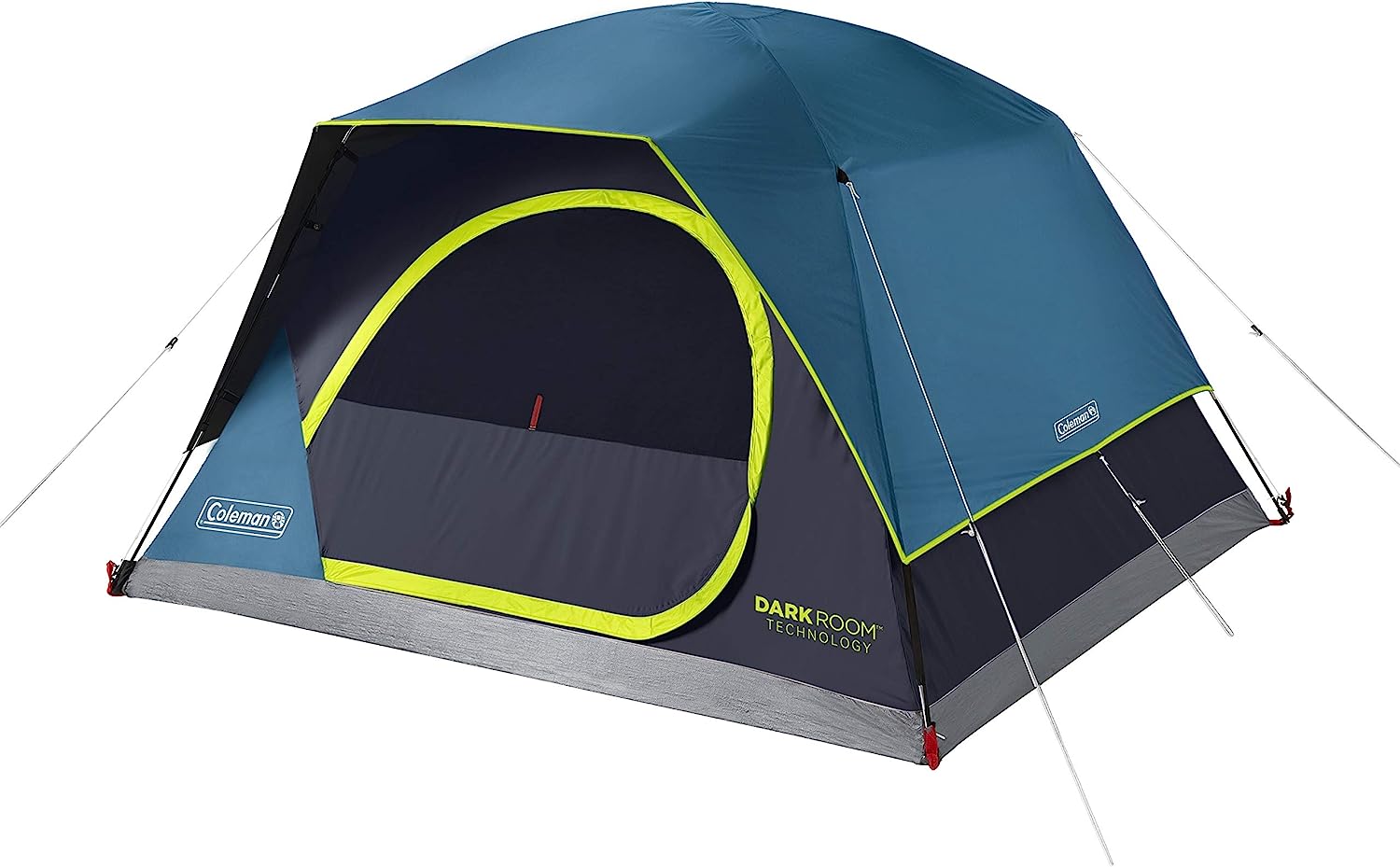
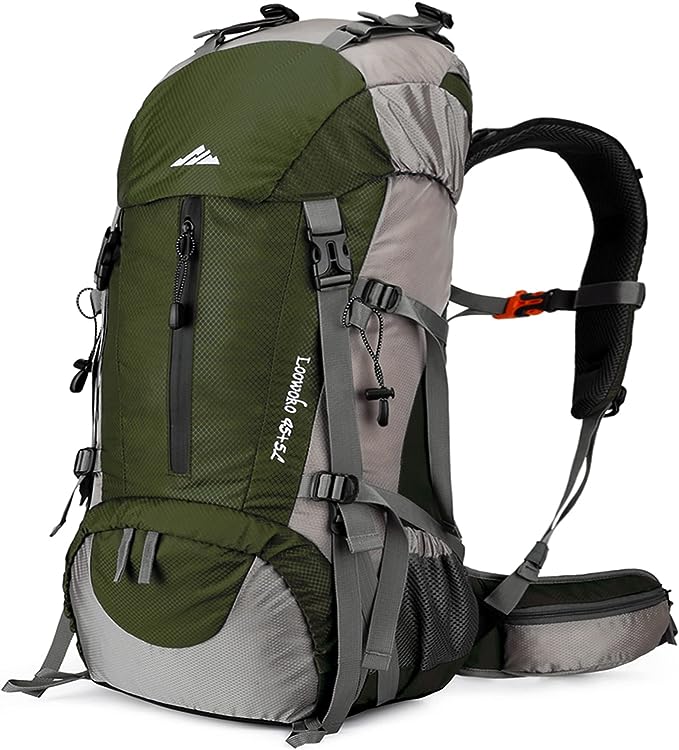
Popular Hiking Trails
Hot Springs Mountain Trail
- Length: 1.5 miles (one way)
- Difficulty: Moderate
- This popular trail climbs to the summit of Hot Springs Mountain, providing stunning views of the surrounding area, including the town of Hot Springs and the Ouachita Mountains. The trail is relatively steep in some sections but offers a rewarding hike with an observation tower at the top. Visitors can also enjoy the nearby Hot Springs Mountain Tower, which offers panoramic views from a higher vantage point.
Florence Trail
- Length: 0.7 miles (one way)
- Difficulty: Easy
- The Florence Trail is a short, easy hike that leads through wooded areas with views of the Ouachita Mountains. This trail is perfect for beginners or those looking for a relaxing walk. It also provides access to the Hot Springs Mountain Trail and other nearby hiking paths.
Buckstaff Bathhouse Loop
- Length: 0.5 miles (loop)
- Difficulty: Easy
- This short loop trail starts near the Buckstaff Bathhouse and takes visitors on a leisurely walk through the park’s historic district, providing insight into the area’s history and hot spring resources. It is a great option for those who want to combine a bit of history with their hike.
North Mountain Trail
- Length: 1.0 mile (one way)
- Difficulty: Moderate
- This trail provides a more moderate hiking experience, taking visitors through dense woods and offering beautiful vistas of the park’s natural landscape. It is shorter than some of the other mountain trails but still provides a good workout.
Gulpha Gorge Trail
- Length: 1.5 miles (round trip)
- Difficulty: Moderate
- This scenic trail takes hikers through Gulpha Gorge, following Gulpha Creek and offering peaceful views of the water and surrounding forest. The trail has a moderate incline and is suitable for those looking to enjoy a forested environment with views of the creek. It connects to other park trails, making it an excellent choice for a longer hike or loop.
West Mountain Trail
- Length: 2.0 miles (one way)
- Difficulty: Moderate
- The West Mountain Trail offers a more challenging hike with rewarding views of the surrounding areas. The trail leads to the summit of West Mountain and passes through a dense forest, providing hikers with a sense of seclusion and the opportunity to spot local wildlife. At the summit, hikers are treated to expansive views of the town and surrounding landscape.
South Mountain Trail
- Length: 2.0 miles (one way)
- Difficulty: Moderate to Difficult
- This trail offers a more strenuous hike, taking visitors up the southern side of the park’s mountains. It provides views of Hot Springs and the surrounding valleys. The trail is less trafficked than others, making it ideal for those seeking solitude and a more challenging hike.
Hiking Trails in Hot Springs National Park
Hiking at Hot Springs National Park offers a unique opportunity to explore the natural beauty of the Ouachita Mountains while discovering the park’s rich history. The park features a variety of trails that cater to all levels of hikers, from leisurely strolls to more strenuous hikes. The trails take visitors through diverse landscapes, including dense forests, serene streams, and mountain summits, providing a refreshing escape into nature just steps from the town of Hot Springs. The interconnected trails allow for easy exploration of different parts of the park, making it possible to create custom hikes that suit your preferences.
One of the most popular trails is the Hot Springs Mountain Trail, which leads to the summit of Hot Springs Mountain. This moderate hike rewards visitors with spectacular views of the town and the surrounding landscape. At the top, the Hot Springs Mountain Tower offers panoramic views, making it a great spot for photos and a break. For a more tranquil experience, the Gulpha Gorge Trail follows Gulpha Creek, passing through a forested gorge. This moderate trail is ideal for those seeking peace and quiet, as it offers a more secluded setting and opportunities for birdwatching and wildlife spotting.
Wildlife at the Park
Hot Springs National Park is home to a diverse range of wildlife, offering visitors the chance to encounter a variety of species in their natural habitats. The park’s forests, creeks, and mountains provide a rich environment for both common and rare animals. Deer are frequently seen in the park, especially in the early mornings and evenings, as they roam through the forested areas. Other mammals such as raccoons, skunks, and armadillos are also common, while smaller creatures like squirrels, chipmunks, and rabbits are frequently spotted along the trails. The park is also home to a variety of bats, which can be seen at dusk, particularly near the park’s caves and wooded areas.
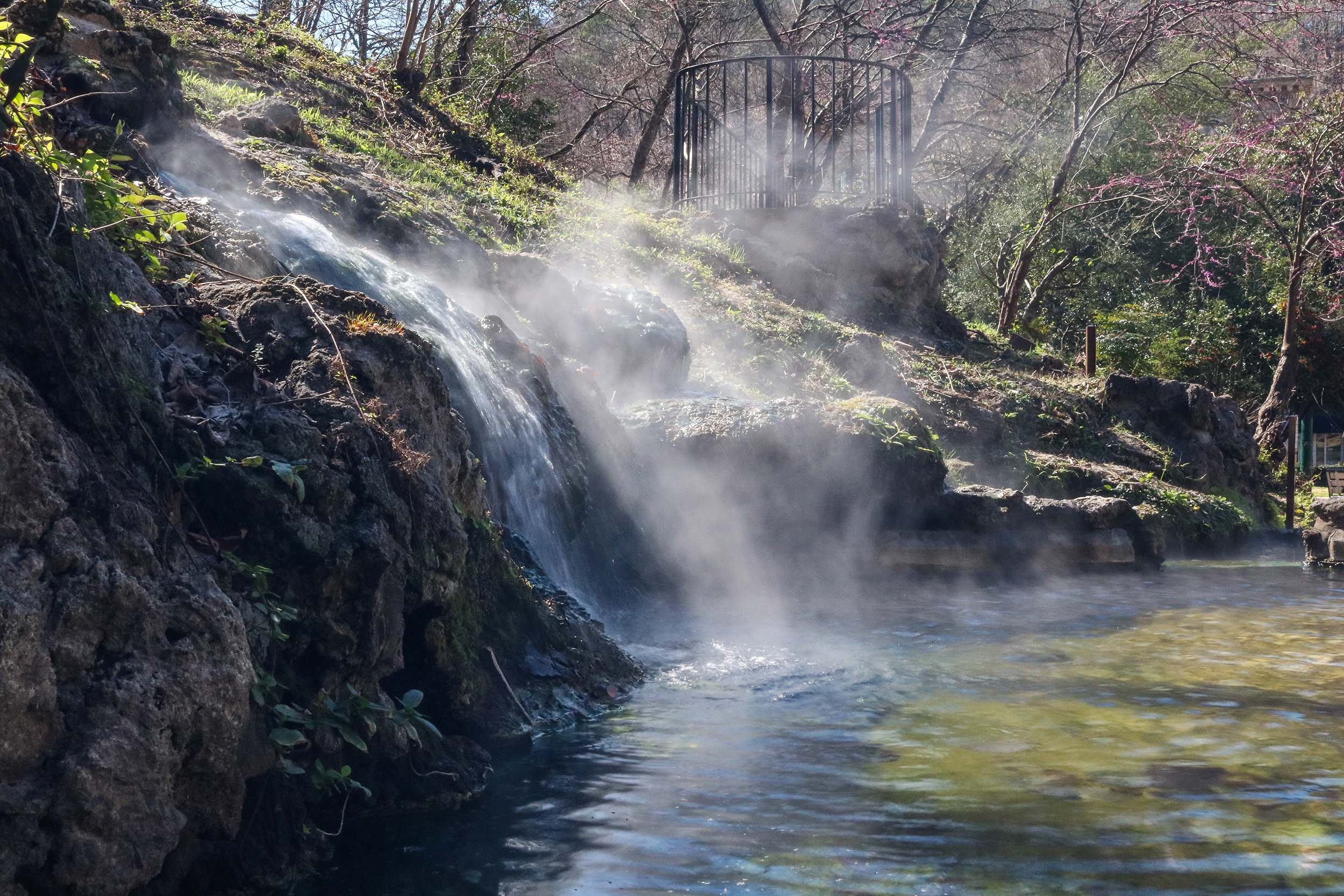
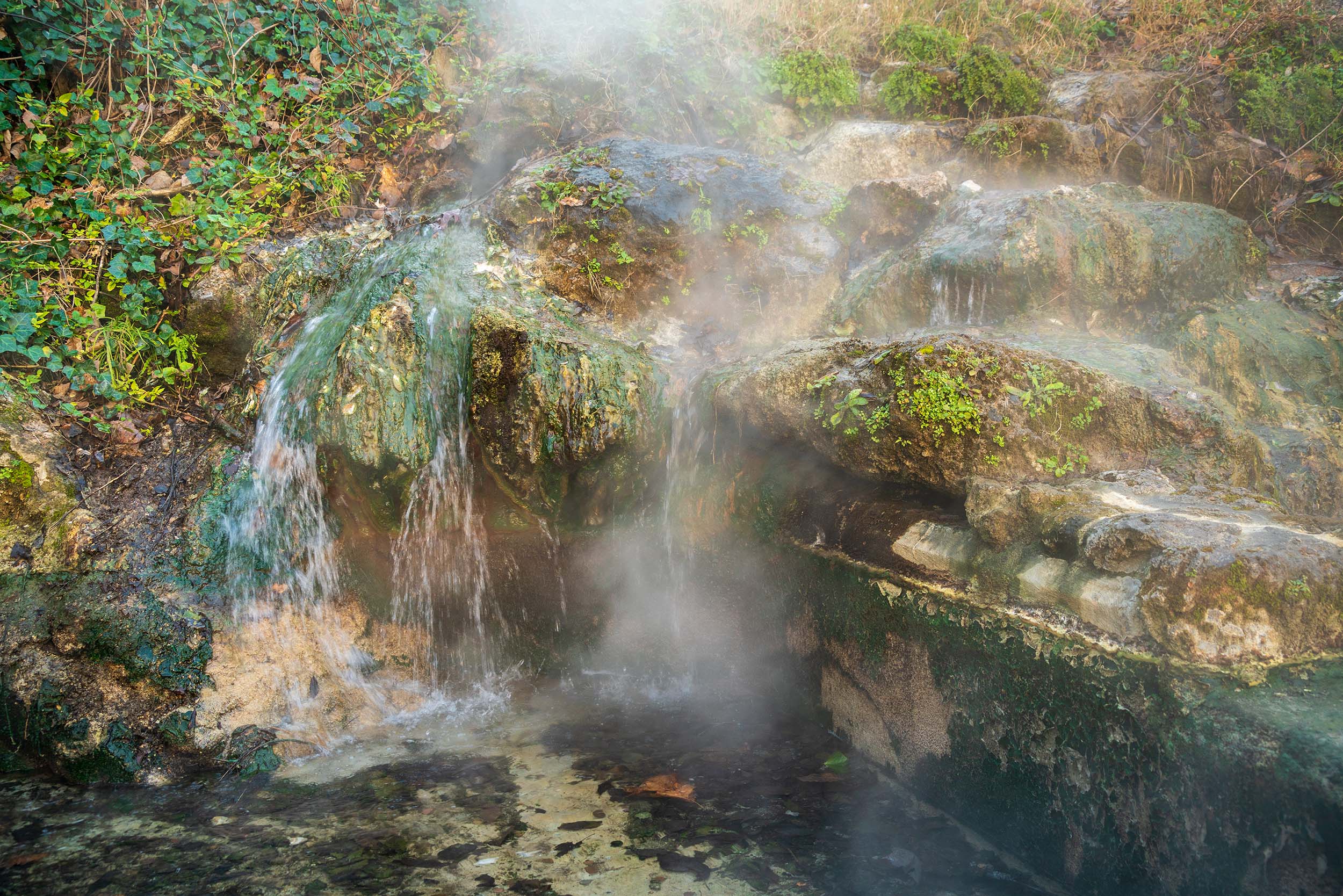
Birdwatchers will find Hot Springs National Park to be an ideal location, with over 200 species of birds recorded in the area. Migratory birds, such as warblers and thrushes, pass through the park during the spring and fall, adding to the diversity of birdlife. The park’s wooded areas and wetlands attract species like the red-shouldered hawk, wild turkey, and eastern bluebird. Additionally, visitors can spot woodpeckers, including the pileated woodpecker, and songbirds such as robins, juncos, and sparrows. The variety of birdlife is especially apparent along the park’s hiking trails, where birdwatching enthusiasts can observe these species in their natural environments.
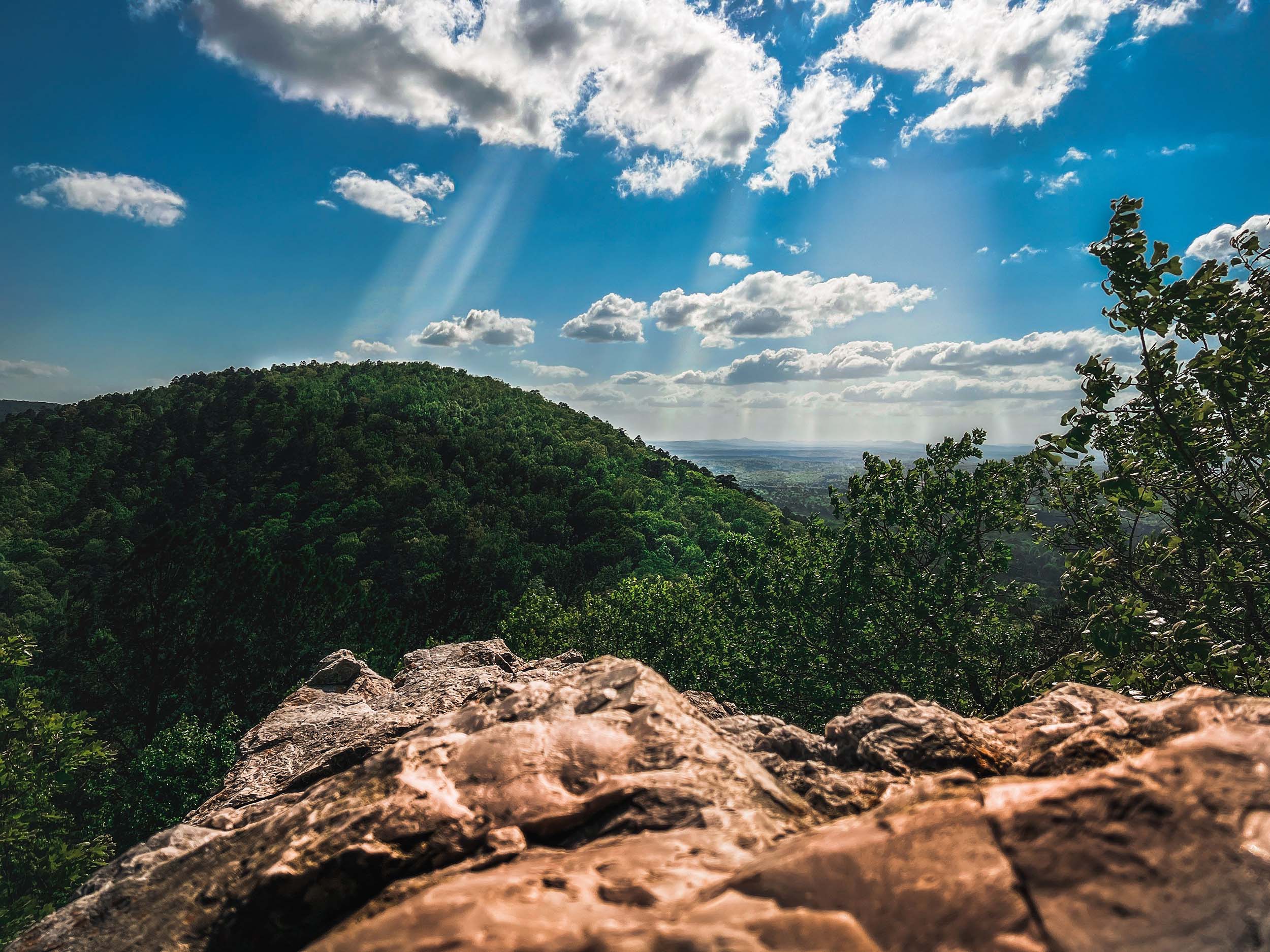
Gear We Used

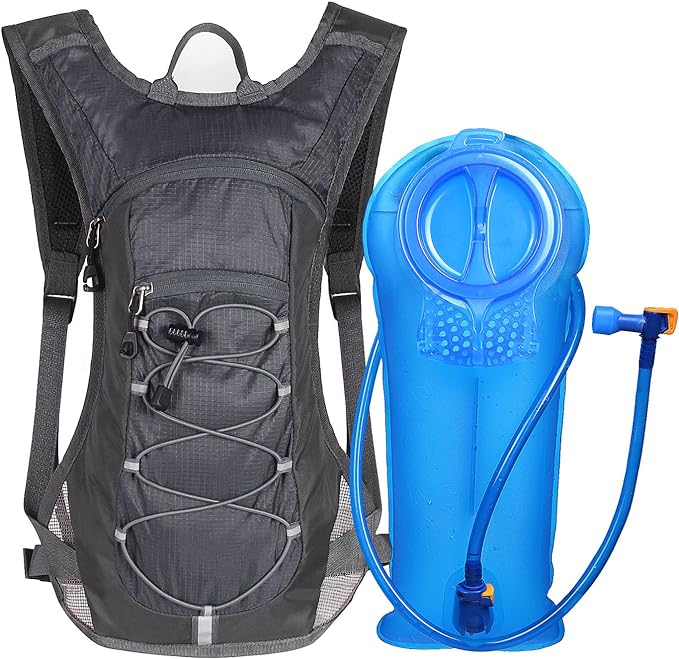
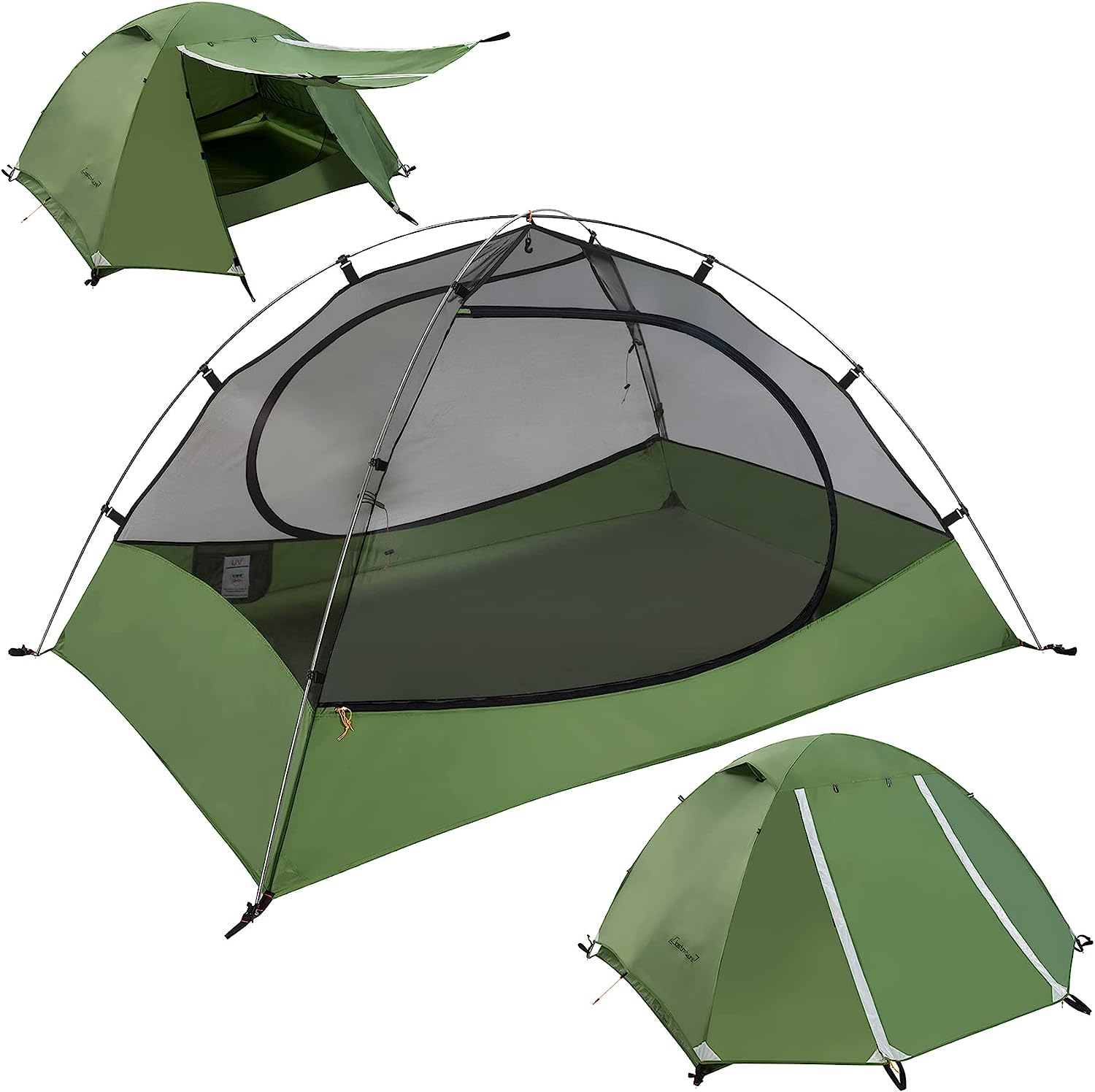
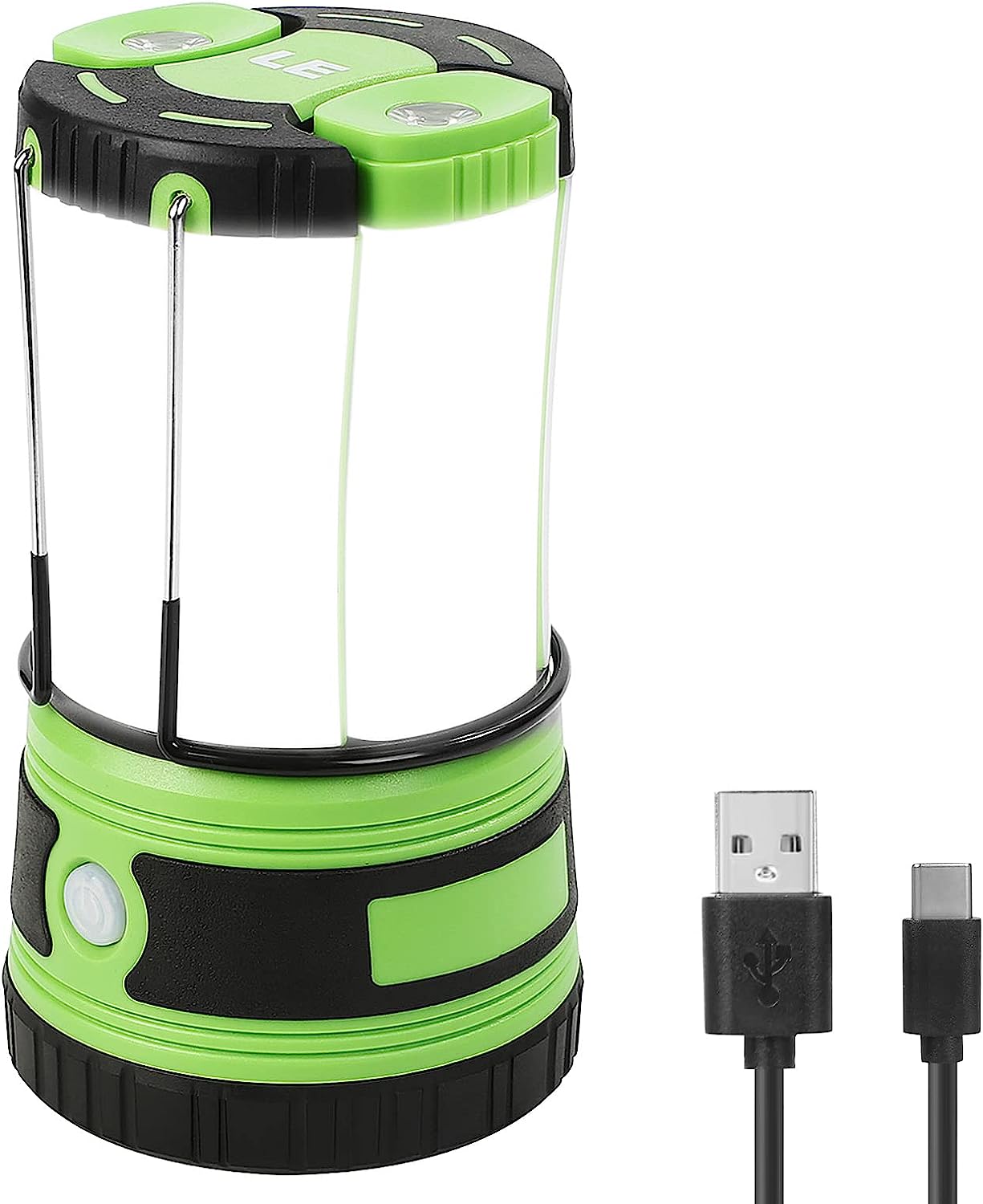
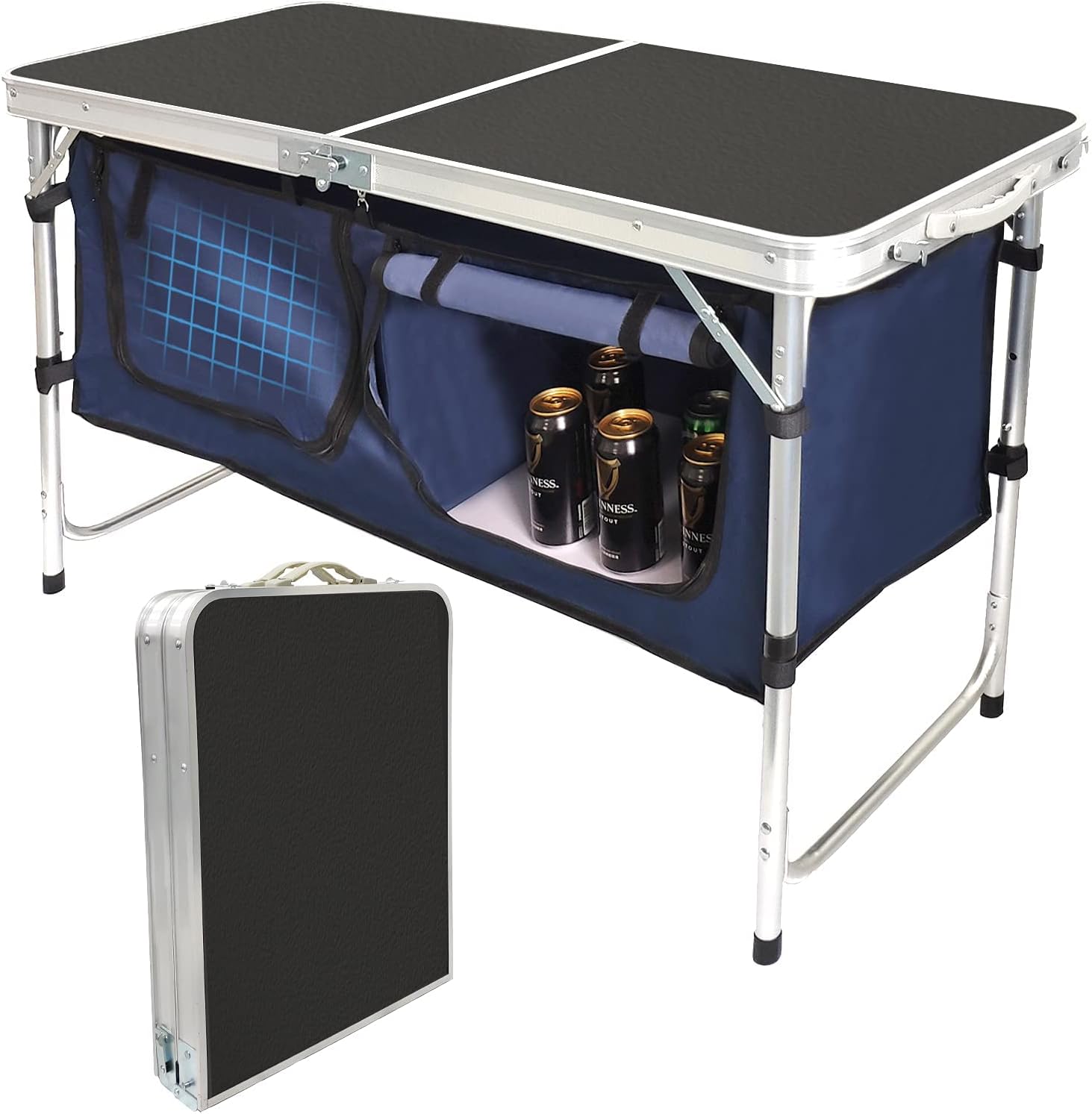
Must-Do Activities
Soak in the Thermal Springs
Visit the historic bathhouses along Bathhouse Row, where you can experience the therapeutic benefits of the natural hot springs. The Buckstaff Bathhouse offers traditional spa treatments, while the Fordyce Bathhouse provides a chance to learn about the park’s rich history and the role of the springs in the area’s development.
Explore the Park’s Scenic Trails
Wander through the park’s variety of hiking trails, like the Gulpha Gorge Trail or West Mountain Trail, which offer peaceful walks through forests, along creeks, and up to scenic overlooks. The trails provide excellent opportunities for wildlife spotting and connecting with nature.
Hike to the Summit of Hot Springs Mountain
Take a hike on the Hot Springs Mountain Trail for stunning views of the surrounding landscape. At the summit, you can enjoy panoramic views of the town, the Ouachita Mountains, and the nearby lakes. For an even better view, head to the Hot Springs Mountain Tower.
The Hot Springs National Park History
The history of Hot Springs National Park dates back thousands of years, with the natural thermal springs being a significant cultural and spiritual resource for Native American tribes long before European settlers arrived. Indigenous peoples, including the Quapaw, used the waters for their therapeutic qualities, considering them sacred. The Quapaw built ceremonial bathhouses along the springs, where they would gather for healing rituals. This longstanding connection to the land and its healing waters made the area a sacred site for these native tribes, who referred to the springs as “the place of peace.”
In the early 19th century, European settlers began to recognize the value of the hot springs, and by 1832, the U.S. government set aside the land around the springs as a federal reserve, making it the first federally protected land in the United States. The protection of the area was established to safeguard the natural hot springs, which were believed to have medicinal properties. As the popularity of the area grew, people traveled from all over the country to experience the therapeutic baths, leading to the development of the town of Hot Springs and the creation of bathhouses along Bathhouse Row. By the late 19th century, Hot Springs had become a popular destination for wealthy visitors seeking health and relaxation.





